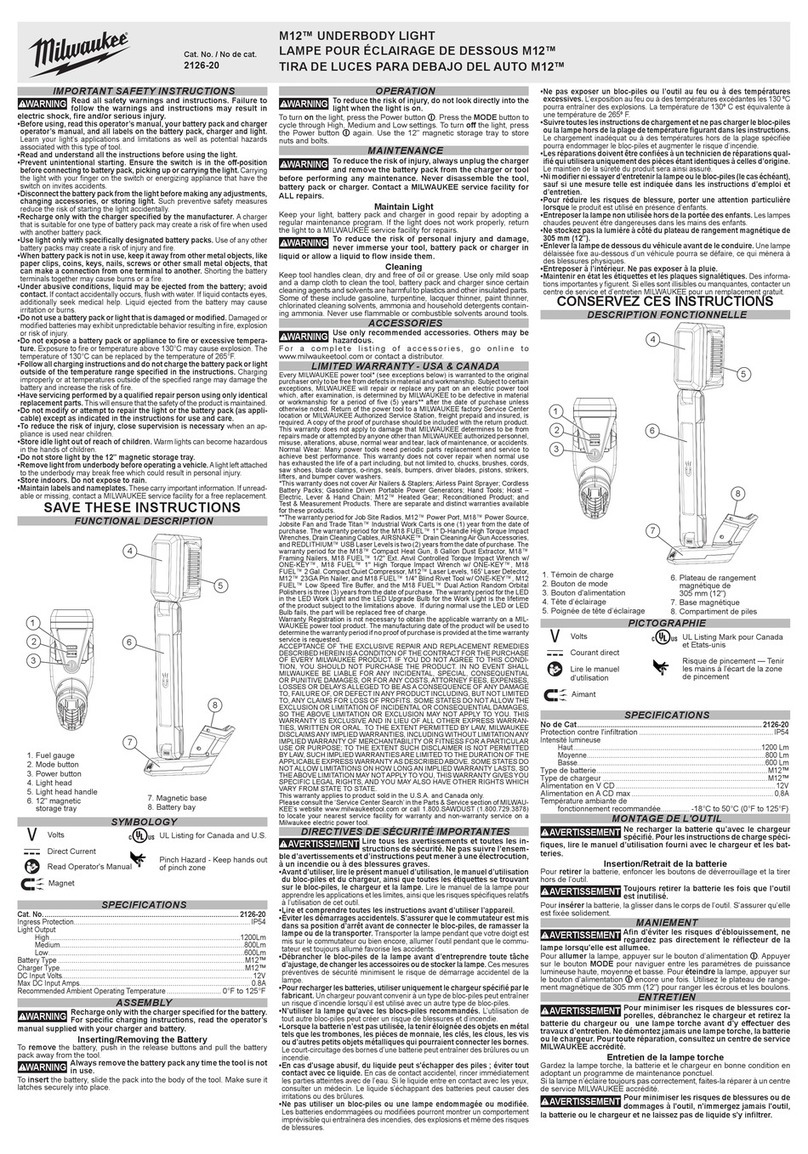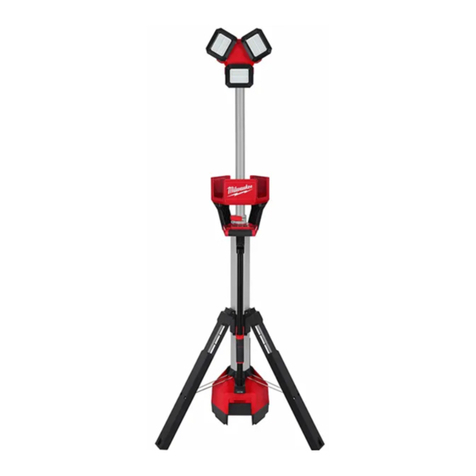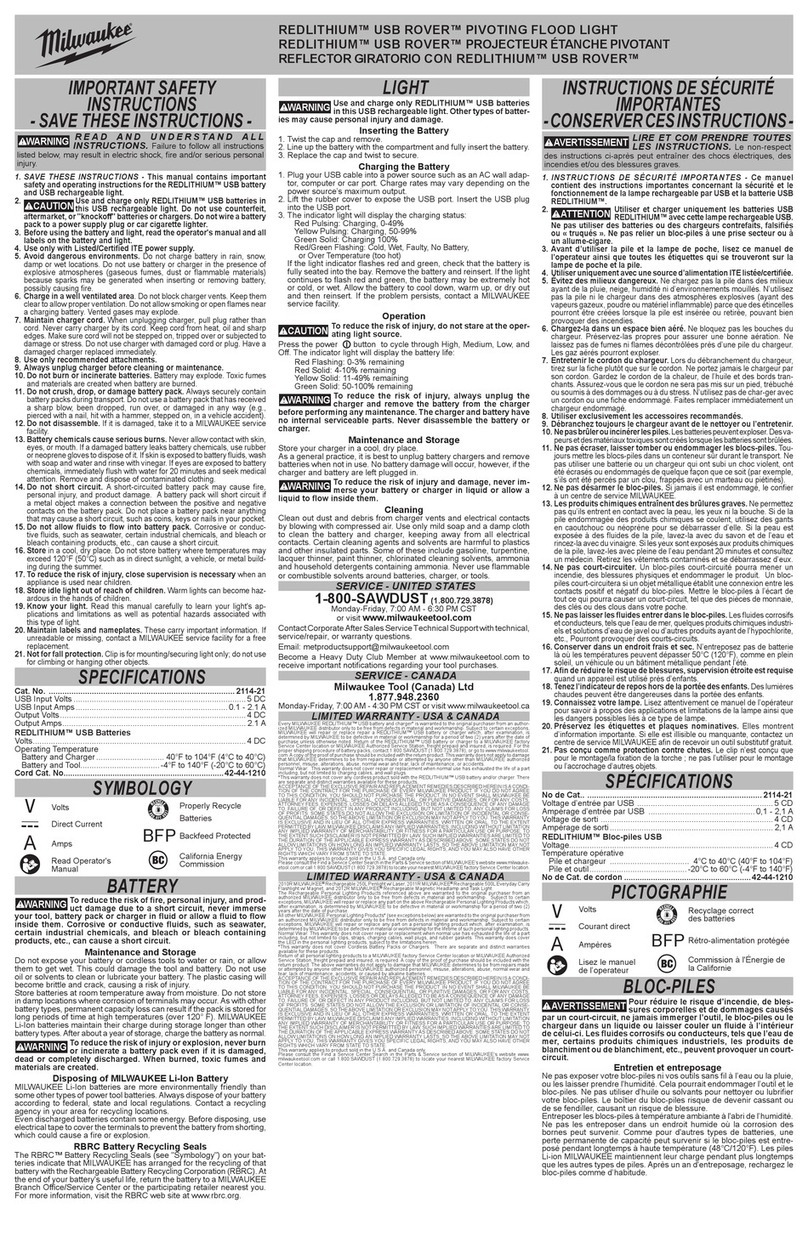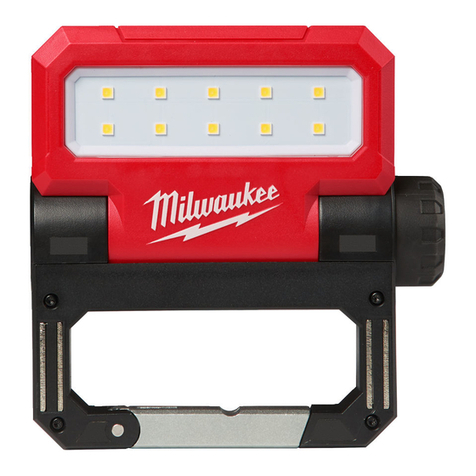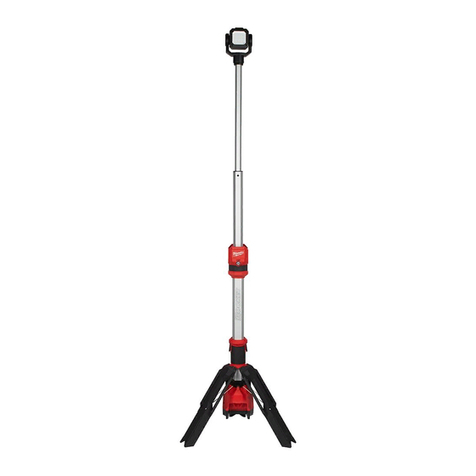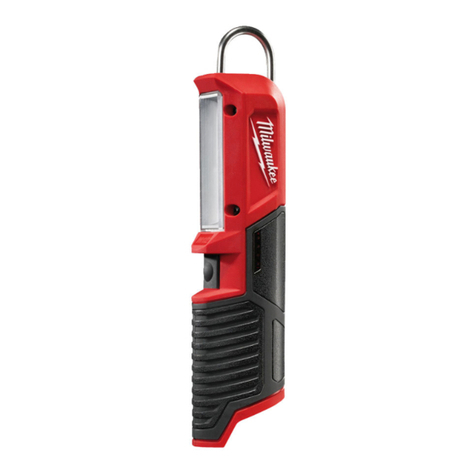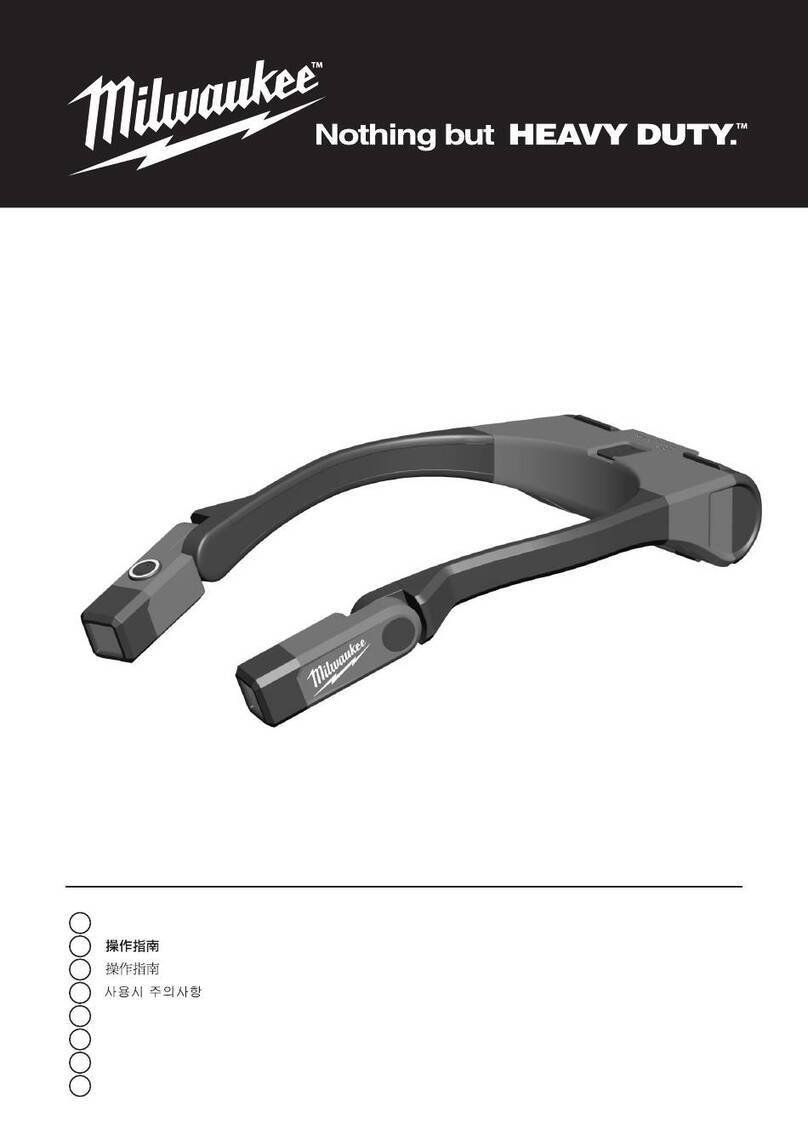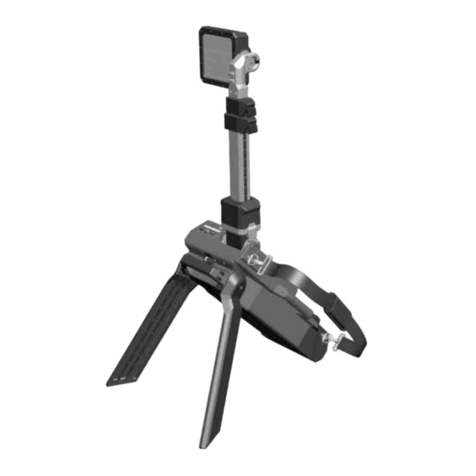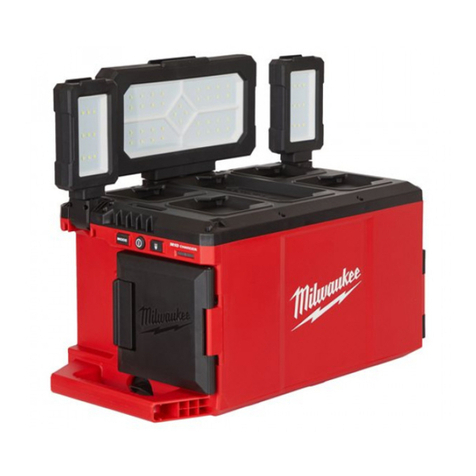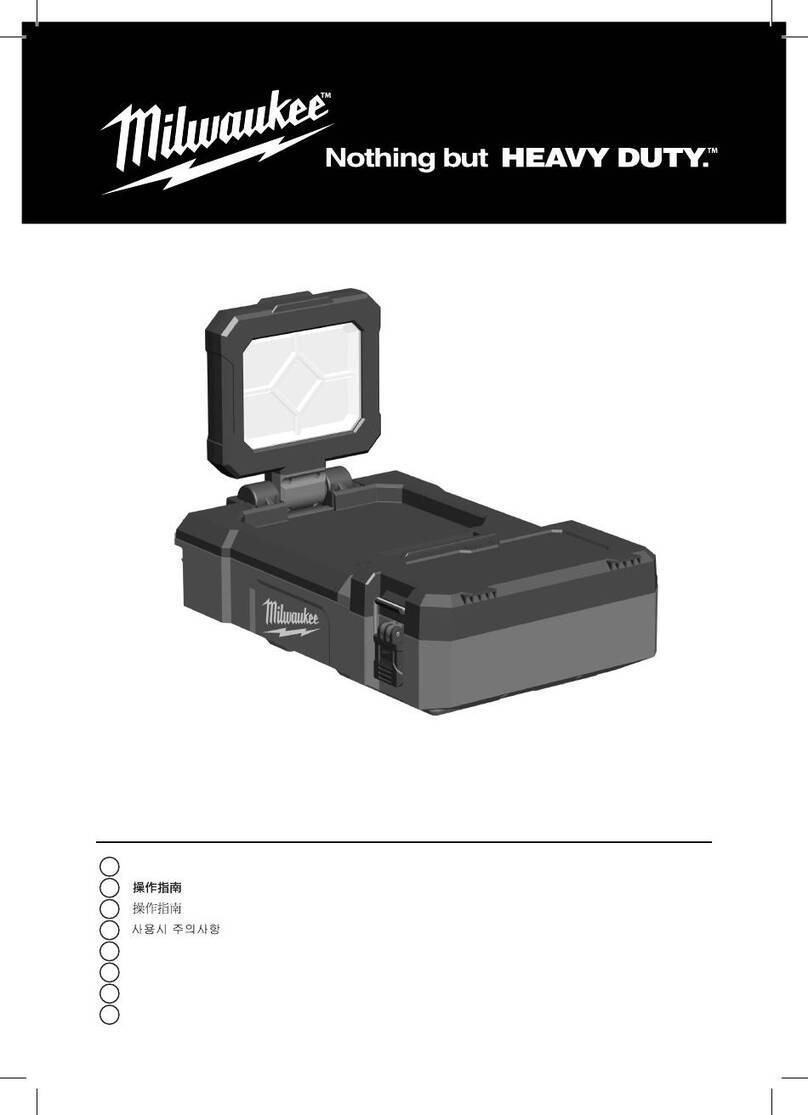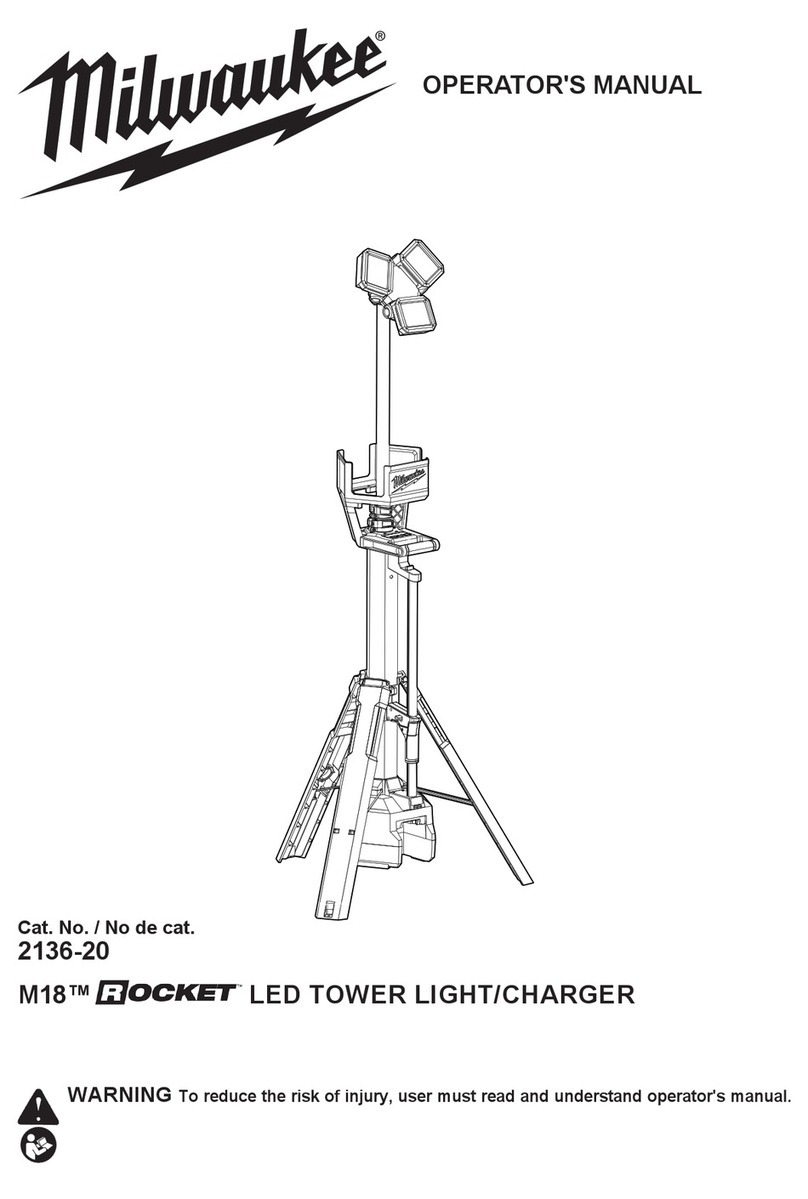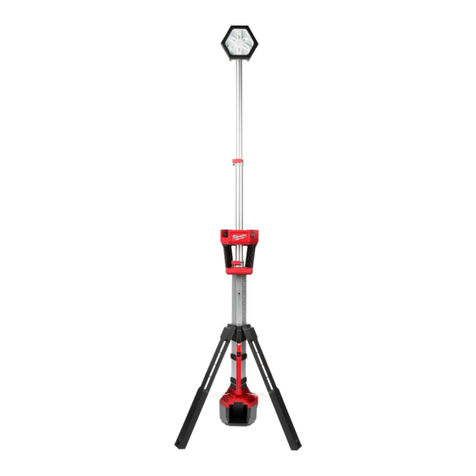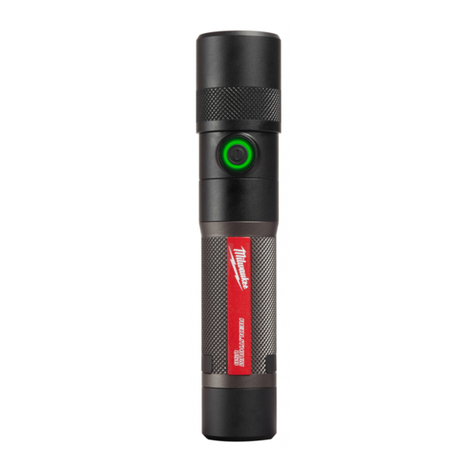
EXTENSION CORDS
Grounded tools require a three wire extension
cord. Double insulated tools can use either a two
or three wire extension cord. As the distance from
the supply outlet increases, you must use a heavier
gauge extension cord. Using extension cords with
inadequately sized wire causes a serious drop in
voltage, resulting in loss of power and possible tool
damage. Refer to the table shown to determine the
required minimum wire size.
The smaller the gauge number of the wire, the greater
the capacity of the cord. For example, a 14 gauge
cord can carry a higher current than a 16 gauge cord.
When using more than one extension cord to make
up the total length, be sure each cord contains at
least the minimum wire size required. If you are using
one extension cord for more than one tool, add the
nameplate amperes and use the sum to determine
the required minimum wire size.
Guidelines for Using Extension Cords
•Be sure your extension cord is properly wired and in
good electrical condition. Always replace a damaged
extension cord or have it repaired by a qualied
person before using it.
•Protect your extension cords from sharp objects,
excessive heat and damp or wet areas.
Recommended Minimum Wire Gauge
For Extension Cords*
Extension Cord Length
Nameplate
Amperes 25' 50' 75' 100' 150'
0 - 2.0
2.1 - 3.4
3.5 - 5.0
5.1 - 7.0
7.1 - 12.0
12.1 - 16.0
16.1 - 20.0
18
18
18
18
16
14
12
18
18
18
16
14
12
10
18
18
16
14
12
10
--
18
16
14
12
10
--
--
16
14
12
12
--
--
--
* Based on limiting the line voltage drop to ve volts at 150%
of the rated amperes.
READ AND SAVE ALL INSTRUCTIONS
FOR FUTURE USE.
Double Insulated Tools (Two-Prong Plugs)
Tools marked “Double Insulated” do not require
grounding. They have a special double insulation
system which satises OSHA requirements and
complies with the applicable standards
Fig. A Fig. B
of Underwriters Laboratories, Inc., the
Canadian Standard Association and
the National Electrical Code. Double
Insulated tools may be used in either
of the 120 volt outlets shown in Figures
A and B.
SYMBOLOGY
Volts
Direct Current
Alternating Current
Amps
Double Insulated
AC Power
CUS UL Listing for Canada and U.S.
CAUTION
Bright Light - Do Not Stare Into Light
1. 2.
Always extend legs before raising the
poles.
Keep hands clear of housing when
collapsing the extension poles.
Read operator’s manual.
FUNCTIONAL DESCRIPTION
1
3
4
2
6
8
10
5
7
1. Head
2. Extension poles
3. Extension latches
4. Switch
5. Upper handle
6. Leg release button
7. Legs
8. Carrying handle
9. Battery bay
10. AC inlet
9
OPERATION
WARNING
To reduce the risk of
injury, do not look directly into the light when
the light is on.
Using the Light
1. Insert battery pack or plug into AC power.
2. Use the switch to cycle through High, Medium,
Low, and OFF. Press and hold to turn OFF from
any setting.
MAINTENANCE
WARNINGTo reduce the risk of
injury, always unplug the charger and remove the
battery pack from the charger before performing
any maintenance. Never disassemble the tool,
battery pack or charger. Contact a MILWAUKEE
service facility for ALL repairs.
Maintaining Light
Keep your light, battery pack and charger in good
repair by adopting a regular maintenance program. If
the light does not work properly, return the light to a
MILWAUKEE service facility for repairs.
Tightening
If the head or extensions will not hold their position,
the screws may need to be tightened. Tighten the
bracket screws by holding the head. Tighten the ex-
tension latches by opening the latches and tightening
the screw inside.
WARNINGTo reduce the risk of
personal injury and damage, never immerse your
tool, battery pack or charger in liquid or allow a
liquid to ow inside them.
Cleaning
Clean dust and debris from vents. Keep handles
clean, dry and free of oil or grease. Use only mild
soap and a damp cloth to clean, since certain clean-
ing agents and solvents are harmful to plastics and
other insulated parts. Do not use sprays or solvents.
Some of these include gasoline, turpentine, lacquer
thinner, paint thinner, chlorinated cleaning solvents,
ammonia and household detergents containing am-
monia. Never use ammable or combustible solvents
around tools.
ASSEMBLY
WARNING Recharge only with
the charger specied for the battery. For specic
charging instructions, read the operator’s manual
supplied with your charger and battery.
Inserting/Removing Battery Pack
Insert the battery pack by sliding battery pack into the
battery bay. Insert the battery pack until the battery
latches lock.
To remove the battery pack, press in both battery
latches and slide the battery pack out of the battery bay.
Inserting/Removing Extension Cord
To operate the light on AC power, extend and lock
legs. Plug a suitable extension cord into the AC
inlet . To disconnect the extension cord, press the
switch button to turn off the light, then remove the
cord from the inlet.
NOTE: When an extension cord is plugged into the
light, the light will automatically run on AC power.
WARNINGTo reduce the risk of
injury, do not look directly into the light when the
light is on.
To reduce the risk of injury, always fully extend and
lock legs into position before raising the poles.
Light may tip and cause injury.
To reduce the risk of injury, keep hands clear of
the housing area when collapsing the extension
poles. Head may descend rapidly, pinching hands
and ngers.
Extending/Collapsing the Legs
Always extend and lock legs before raising the poles.
1. Stand light upright.
2. Press the Leg Release Button and slide the legs
down using the Carrying Handle.
3. Lift up on the Upper Handle while sliding down the
Carrying Handle.
4. Lift until the Battery Bay lifts off the oor and the
legs lock into place.
5. To collapse, press the Leg Release Button and slide
in the legs using the Carrying Handle. Keep hands
clear of the legs as they collapse.
Extending/Collapsing the Extension Poles
Extend or collapse the two poles to set the light at the
desired height.
1. Extend and lock the legs.
2. Open the top extension latch and raise the head out
of the housing. Extend the pole to the desired height.
3. Fully close top extension latch.
4. If more height is needed, fully extend rst pole and
close latch before opening bottom latch.
5. Continue to raise the head to the desired height.
6. Fully close bottom extension latch.
7. Rotate the heads to the desired angle. The three
heads can be adjusted individually.
NOTE: Before collapsing the poles, the heads must
be returned to their upright angle.
Feel the difference with Milwaukee. Learn more about power tools we have.
